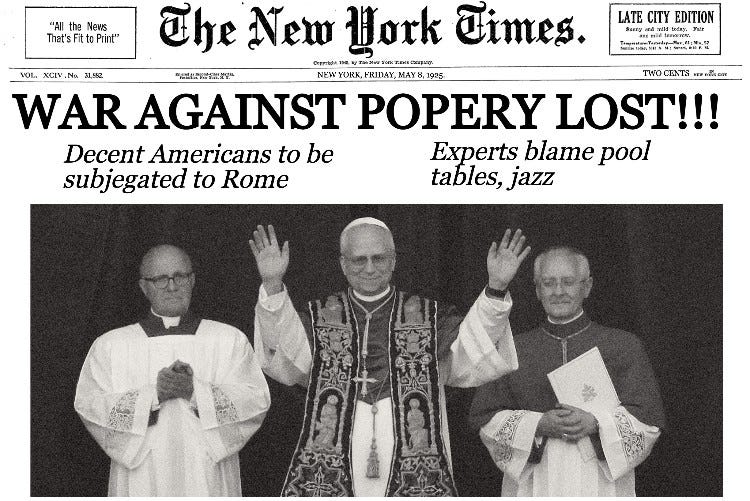America's Long March to Grudging Acceptance of Catholics
A lesson on the impermanence of social divisions

Each episode of my podcast begins with a recap of the news from this week in 1925. Recurring themes include political chaos in Europe, surprising levels of interest in sled dog racing, and wild optimism about Zeppelin travel. But the biggest, unmissable, baked-into-practically-every-story theme is the split between Protestants and Catholics.
It seems worth reflecting on that history now that we have an American pope. I’m not sure what direct benefits accrue to Americans now that one of our own is Making Poping Great Again; I think maybe we get a discount on the absolution required for venial sins, plus free Crazy Bread at Little Caesars.1 At a minimum, though, the fact that almost all Americans are greeting this as an interesting, positive development — kind of like finding $5 in a coat pocket — is a cultural marker. A hundred years ago, “WAR AGAINST POPERY LOST”-type headlines would have been everywhere. And I think it’s worth thinking about what Catholics’ arc in America tells us about the divides that exist in society today.

